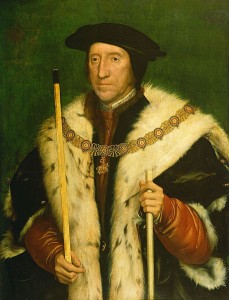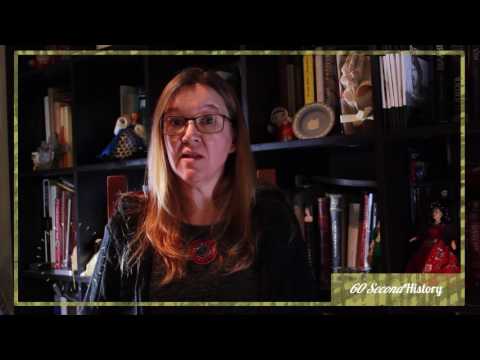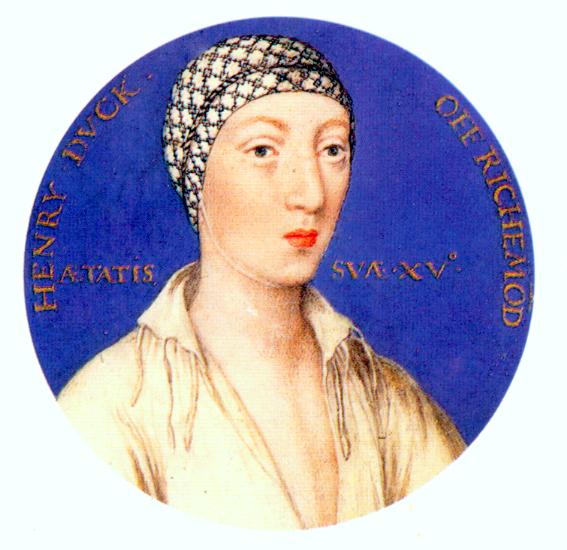This list includes the English royal family and nobility of the Tudor period, along with how they would be addressed. Do let me know if I have missed any by commenting below.
Rank
Here they are in order of importance:
- Monarch and royal family
- Duke
- Marquis
- Earl
- Viscount
- Baron
- Knight
Monarch - King or Queen
- “Your Majesty” in the first instance and then “Sire” or “Ma'am”.
- Henry VII (1457-1509)
- Henry VIII (1509-1547)
- Edward VI (1547-1553)
- Lady Jane Grey (13 days in 1553)
- Mary I (1553-1558)
- Elizabeth I – (1558-1603)
Queen Consort
- Elizabeth of York (1486-1503)
- Catherine of Aragon (1509-1533) - Catherine was demoted to Dowager Princess of Wales in 1533 following the annulment of her marriage to Henry VIII.
- Anne Boleyn (1533-1536)
- Jane Seymour (1536-1537)
- Anne of Cleves (1540)
- Catherine Howard (1540-1542)
- Catherine Parr (1543-1547)
King Consort
Philip of Spain was Mary I's King Consort from 1554 to 1558.
Queen Regent
- Catherine of Aragon – acted as regent in 1513 when Henry VIII was in France.
- Catherine Parr – acted as regent in 1544 when Henry VIII was in France
Prince/Princess
“Your Royal Highness” then “Sir”/”Ma'am”.
Henry VII's children:
- Arthur, Prince of Wales (b. 1486 - d. 1502) married Catherine of Aragon in 1501 so she was Princess of Wales.
- Margaret Tudor, Queen of Scots (b. 1489 – d. 1541)
- Henry (VIII), Prince of Wales (b. 1491 – d. 1547)
- Elizabeth Tudor (b. 1492 – d. 1495)
- Mary Tudor, Queen of France (b. 1496 – 1533)
- Edmund Tudor (b. 1499 – d. 1500)
- Katherine Tudor (b. and d. 1503)
Henry VIII's legitimate children:
- Henry, Duke of Cornwall (b. and d. 1511)
- Mary I (b. 1516 – d. 1558)
- Elizabeth I (b. 1533 – d. 1603)
- Edward VI, was Prince of Wales (b. 1537 – d. 1553)
Lord Protector
- Edward Seymour, Duke of Somerset, was appointed Lord Protector of the Realm and Governor of the King's Person in 1547 but fell from power in 1549.
- John Dudley led Edward VI's government as Lord President of the Council from 1549-1553.
Dukes of the Tudor Period (in alphabetical order)
Title: Duke, wife: Duchess
“Duke” comes from the Latin dux, “leader”.
Address: “Your Grace”, “Duke”/ “Your Grace”/”Duchess.
“Duke” is the highest non-royal title in the English peerage and the Duke of Norfolk is the premier Duke of England (except for any royal dukes).
- Duke of Bedford – Jasper Tudor, 1st Duke of Bedford.
- Duke of Buckingham – Edward Stafford, 3rd Duke of Buckingham.
- Duke of Cornwall – Arthur, son of Henry VII; Henry (VIII), son of Henry VII; Henry, son of Henry VIII and Catherine of Aragon; Edward VI, son of Henry VIII and Jane Seymour.
- Duke of Norfolk – Thomas Howard, 2nd Duke of Norfolk; Thomas Howard, 3rd Duke of Norfolk; Thomas Howard, 4th Duke of Norfolk.
- Duke of Northumberland - John Dudley, 1st Duke of Northumberland and Lord President of the Council.
- Duke of Richmond – Henry Fitzroy, illegitimate son of Henry VIII and Elizabeth Blount, was created 1st Duke of Richmond and Somerset.
- Duke of Somerset - Edmund Tudor, 1st Duke of Somerset, son of Henry VII; Henry Fitzroy, 1st Duke of Richmond and Somerset, illegitimate son of Henry VIII; Edward Seymour, 1st Duke of Somerset and Lord Protector.
- Duke of Suffolk – Charles Brandon, 1st Duke of Suffolk; Henry Brandon, 2nd Duke of Suffolk; Charles Brandon, 3rd Duke of Suffolk; Henry Grey, 1st Duke of Suffolk.
- Duke of York – Henry (VIII), son of Henry VII.
Marquess (Marquis)
Title: Marquess, wife: Marchioness.
“My Lord”, “Your Lordship”; “My Lady”, “Your Ladyship”.
Marquess comes from the French “marquis” which is a derivative of “marche” or “march”, meaning boundary.
- Marquess/Marquis of Pembroke – This title was created in 1532 for Anne Boleyn and she held it in her own right.
- Marquess of Exeter – Henry Courtenay, 1st Marquess of Exeter.
- Marquess of Dorset – Thomas Grey, 1st Marquess of Dorset; Thomas Grey, 2nd Marquess of Dorset; Henry Grey, 3rd Marquess of Dorset.
Marquess of Northampton – William Parr, 1st Marquess of Northampton. - Marquess of Winchester – William Paulet, 1st Marquess of Winchester; John Paulet, 2nd Marquess of Winchester; William Paulet, 3rd Marquess of Winchester; William Paulet, 4th Marquess of Winchester.
Earl
Title: Earl, wife: Countess.
“My Lord”, “Your Lordship”; “My Lady”, “Your Ladyship”.
Earl comes from the Anglo-Saxon “ealdorman”, a local ruler.
- Earl of Arundel – Thomas Fitzalan, 17th Earl of Arundel; William Fitzalan, 18th Earl of Arundel; Henry Fitzalan, 19th Earl of Arundel; Philip Howard, 20th Earl of Arundel; Thomas Howard, 21st Earl of Arundel.
- Earl of Bath – John Bourchier, 1st Earl of Bath; John Bourchier, 2nd Earl of Bath; William Bourchier, 3rd Earl of Bath.
- Earl of Bedford – John Russell, 1st Earl of Bedford; Francis Russell, 2nd Earl of Bedford; Edward Russell, 3rd Earl of Bedford.
- Earl of Bridgewater – Henry Daubeny, 1st Earl of Bridgewater.
- Earl of Cumberland – Henry Clifford, 1st Earl of Cumberland; Henry Clifford, 2nd Earl of Cumberland; George Clifford, 3rd Earl of Cumberland.
- Earl of Derby – Thomas Stanley, 1st Earl of Derby; Thomas Stanley, 2nd Earl of Derby; Edward Stanley, 3rd Earl of Derby; Henry Stanley, 4th Earl of Derby; Ferdinando Stanley, 5th Earl of Derby.
- Earl of Devon - Edward Courtenay, 1st Earl of Devon; William Courtenay, 1st Earl of Devon; Henry Courtenay, 2nd Earl of Devon; Edward Courtenay, 1st Earl of Devon; William Courtenay, de jure 2nd Earl of Devon; William Courtenay, de jure 3rd Earl of Devon.
- Earl of Essex – Henry Bourchier, 2nd Earl of Essex; Thomas Cromwell, 1st Earl of Essex; William Parr, 1st Earl of Essex; Walter Devereux, 1st Earl of Essex; Robert Devereux, 2nd Earl of Essex; Robert Devereux, 3rd Earl of Essex.
- Earl of Hertford – Edward Seymour, 1st Earl of Hertford (later Duke of Somerset and Lord Protector; Edward Seymour, 1st Earl of Hertford.
- Earl of Huntingdon – George Hastings, 1st Earl of Huntingdon; Francis Hastings, 2nd Earl of Huntingdon; Henry Hastings, 3rd Earl of Huntingdon; George Hastings, 4th Earl of Huntingdon.
- Earl of Kent – George Grey, 2nd Earl of Kent; Richard Grey, 3rd Earl of Kent; Henry Grey, 4th Earl of Kent; Reginald Grey, 5th Earl of Kent; Henry Grey, 6th Earl of Kent.
- Earl of Leicester – Robert Dudley, 1st Earl of Leicester.
- Earl of Lincoln – John de la Pole, 1st Earl of Lincoln; Henry Brandon, 1st Earl of Lincoln; Edward Clinton, 1st Earl of Lincoln; Henry Clinton, 2nd Earl of Lincoln.
- Earl of Northumberland – Henry Percy, 4th Earl of Northumberland; Henry Algernon Percy, 5th Earl of Northumberland; Henry Percy, 6th Earl of Northumberland; Thomas Percy, 7th Earl of Northumberland; Henry Percy, 8th Earl of Northumberland.
- Earl of Nottingham – William de Berkeley, Earl of Nottingham; Henry Fitzroy, illegitimate son of Henry VIII was created Earl of Nottingham in 1525; Charles Howard, 1st Earl of Nottingham.
- Earl of Ormond – Thomas Butler, 7th Earl of Ormond; Thomas Boleyn, 1st Earl of Ormond; Piers Butler, 8th Earl of Ormond; James Butler, 9th Earl of Ormond; Thomas Butler, 10th Earl of Ormond.
- Earl of Oxford – John de Vere, 13th Earl of Oxford; John de Vere, 14th Earl of Oxford; John de Vere, 15th Earl of Oxford; John de Vere, 16th Earl of Oxford; Edward de Vere, 17th Earl of Oxford.
- Earl of Pembroke – William Herbert, 1st Earl of Pembroke; Henry Herbert, 2nd Earl of Pembroke; William Herbert, 3rd Earl of Pembroke.
- Earl of Richmond – Edmund Tudor and Henry Tudor (VII) had held this title but it merged into the crown on the accession of Henry VII.
- Earl of Rutland – Thomas Manners, 1st Earl of Rutland; Henry Manners, 2nd Earl of Rutland; Edward Manners, 3rd Earl of Rutland; John Manners, 4th Earl of Rutland; Roger Manners, 5th Earl of Rutland.
- Countess of Salisbury – Margaret Pole, suo jure Countess of Salisbury.
- Earl of Shrewsbury – George Talbot, 4th Earl of Shrewsbury; Francis Talbot, 5th Earl of Shrewsbury; George Talbot, 6th Earl of Shrewsbury; Gilbert Talbot, 7th Earl of Shrewsbury.
- Earl of Southampton – William Fitzwilliam, 1st Earl of Southampton; Thomas Wriothesley, 1st Earl of Southampton; Henry Wriothesley, 2nd Earl of Southampton; Henry Wriothesley, 3rd Earl of Southampton.
- Earl of Suffolk – Thomas Howard, 1st Earl of Suffolk.
- Earl of Surrey – Thomas Howard, 1st Earl of Surrey (later 2nd Duke of Norfolk); Thomas Howard, 2nd Earl of Surrey (later 3rd Duke of Norfolk); Henry Howard, Earl of Surrey (by courtesy, when his father became 3rd Duke of Norfolk); Thomas Howard, 3rd Earl of Surrey (and 4th Duke of Norfolk); Philip Howard, Earl of Surrey (by courtesy, and Earl of Arundel); Thomas Howard, 4th Earl of Surrey (and Earl of Arundel).
- Earl of Sussex – Robert Radclyffe, 1st Earl of Sussex; Henry Radclyffe, 2nd Earl of Sussex; Thomas Radclyffe, 3rd Earl of Sussex; Henry Radclyffe, 4th Earl of Sussex; Robert Radclyffe, 5th Earl of Sussex.
- Earl of Warwick – Edward Plantagenet, 17th Earl of Warwick; John Dudley, 1st Earl of Warwick; John Dudley, 2nd Earl of Warwick; Ambrose Dudley, 3rd Earl of Warwick.
- Earl of Westmorland – Ralph Neville, 4th Earl of Westmorland; Henry Neville, 5th Earl of Westmorland; Charles Neville, 6th Earl of Westmorland.
- Earl of Wiltshire – Thomas Boleyn, father of Queen Anne Boleyn.
- Earl of Worcester – Charles Somerset, 1st Earl of Worcester; Henry Somerset, 2nd Earl of Worcester; William Somerset, 3rd Earl of Somerset; Edward Somerset, 4th Earl of Worcester.
Viscount
Title: Viscount, wife: Viscountess.
“My Lord”, “Your Lordship”; “My Lady”, “Your Ladyship”.
Viscount comes from the Latin vicecomes, vice-count.
- Viscount Beauchamp – Edward Seymour, 1st Viscount Beauchamp.
- Viscount Beaumont - William Beaumont, 2nd Viscount Beaumont, 7th Baron Beaumont.
- Viscount Hereford – It was created for Walter Devereux , 9th Baron Ferrers of Chartley in 1550; Walter Devereux, 2nd Viscount Hereford; Robert Devereux, 2nd Earl of Essex, 3rd Viscount Hereford; Robert Devereux, 3rd Earl of Essex, 4th Viscount Hereford.
- Viscount Howard of Bindon - Thomas Howard, 1st Viscount Howard of Bindon; Henry Howard, 2nd Viscount Howard of Bindon; Thomas Howard, 3rd Viscount Howard of Bindon.
- Viscount Lisle – Edward Grey, 1st Viscount Lisle; John Grey, 2nd Viscount Lisle; Charles Brandon, 1st Viscount Lisle; Arthur Plantagenet, 1st Viscount Lisle; John Dudley, 1st Viscount Lisle; John Dudley, 2nd Viscount Lisle.
- Viscount Montagu – Anthony Browne, 1st Viscount Montagu; Anthony-Maria Browne, 2nd Viscount Montagu.
- Viscount Rochford – Thomas Boleyn, George Boleyn.
Baron
Title: Baron, wife: Baroness.
“Baron” and “Baroness”, “My Lord”, “Madam”.
Baron comes from the Old Germanic word “baro” or freeman.
In the Tudor period, barons included Baron Hunsdon, Baron Rochford, Baron Burghley, Baron Seymour of Sudeley, Baron Audley, Baron Grey of Groby, Baron Dacre, Baron Lumley, Baron Mountjoy, Baron Grey of Powys, Baron Hungerford, Baron Daubeny, Baron Herbert of Raglan, Baron Conyers, Baron Monteagle, Baron Sandys of the Vine, Baron Vaux, Baron Mordaunt, Baron Rich, Baron Strange, Baron Stafford, and many many more. See https://en.wikipedia.org/wiki/List_of_baronies_in_the_Peerage_of_England for more.
Knight
“Sir”, “My Lady”.
Further reading
- http://www.elizabethan.org/compendium/13.html for more on forms of address.
- Tudor Heraldry and Ranks of English Nobility - http://www.roundtable-bretonnia.org/index2.php?option=com_content&do_pdf=1&id=228
- The Tudor Court's Order of Precedence - http://z6.invisionfree.com/Hot_and_Cold/ar/t4.htm
- Debrett's Peerage - https://www.debretts.com/expertise/essential-guide-to-the-peerage/ranks-and-privileges-of-the-peerage/
- British Titles and Orders of Precedence - https://www.edwardianpromenade.com/resources/titles-and-orders-of-precedence/
- Nobility titles during Tudor times - http://tudorhistory.org/calendar/ntitles.html
- Royalty, Nobility and Gentry of England in the 16th Century - http://www.bordermarches.com/border_life/royalty-nobility-and-gentry-of-england-in-the-16th-century/
- Life in Elizabethan England - http://www.elizabethan.org/compendium/index.html




Leave a Reply